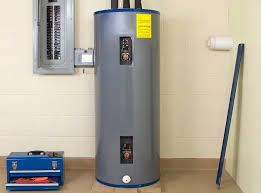Useful Techniques for Caring for Your Home's Hot Water SystemWays to Maintain Your Home's Hot Water System Functioning Well
Click HereThe author is making several great pointers on the subject of Tips For Maintaining Your Hot Water Heater overall in this post beneath.

Hot water is essential for day-to-day comfort, whether it's for a refreshing shower or washing dishes. To ensure your warm water system runs efficiently and lasts much longer, regular maintenance is key. This short article gives practical suggestions and insights on exactly how to preserve your home's warm water system to stay clear of interruptions and pricey repair services.
Intro
Keeping your home's warm water system might seem complicated, however with a few basic steps, you can guarantee it operates smoothly for years ahead. This guide covers every little thing from recognizing your warm water system to do it yourself upkeep pointers and understanding when to contact expert help.
Significance of Preserving Your Hot Water System
Regular upkeep not only extends the lifespan of your warm water system however additionally guarantees it operates efficiently. Ignoring maintenance can lead to reduced performance, higher power bills, and even early failure of the system.
Indicators Your Warm Water System Requirements Upkeep
Recognizing when your warm water system needs interest can stop major problems. Keep an eye out for signs such as inconsistent water temperature, unusual sounds from the heating system, or corroded water.
Recognizing Your Warm Water System
Prior to diving right into maintenance tasks, it's practical to recognize the fundamental elements of your warm water system. Normally, this consists of the water heater itself, pipelines, anode poles, and temperature controls.
Month-to-month Maintenance Tasks
Regular month-to-month checks can help capture minor concerns prior to they escalate.
Purging the Hot Water Heater
Purging your water heater gets rid of debris build-up, enhancing efficiency and lengthening its life.
Checking and Replacing Anode Rods
Anode poles stop deterioration inside the tank. Examining and changing them when worn out is vital.
Inspecting and Changing Temperature Level Settings
Adjusting the temperature level settings makes certain optimum efficiency and safety.
Do It Yourself Tips for Upkeep
You can carry out several maintenance jobs on your own to keep your warm water system in top condition.
Checking for Leakages
Regularly check pipelines and connections for leakages, as these can result in water damages and higher expenses.
Testing Pressure Relief Valves
Examining the pressure safety valve ensures it functions properly and protects against too much pressure build-up.
Protecting Pipes
Protecting warm water pipelines reduces heat loss and can save energy.
When to Call an Expert
While DIY maintenance is advantageous, some problems call for specialist expertise.
Facility Issues Requiring Specialist Help
Examples include major leaks, electrical problems, or if your water heater is regularly underperforming.
Routine Professional Maintenance Benefits
Specialist upkeep can consist of complete assessments, tune-ups, and guaranteeing conformity with security standards.
Verdict
Routine maintenance of your home's warm water system is vital for efficiency, long life, and cost savings. By following these pointers and understanding when to seek specialist assistance, you can ensure a trusted supply of hot water without unanticipated disturbances.
How to Maintain an Instant Hot Water Heater
Before tinkering with your hot water heater, make sure that it’s not powered on. You also have to turn off the main circuit breaker and shut off the main gas line to prevent accidents. Also turn off the water valves connected to your unit to prevent water from flowing into and out of the appliance. 2. When you’re done, you have to detach the purge valves’ caps. These look like the letter “T” and are situated on either side of the water valves. Doing so will release any pressure that has accumulated inside the valves while at the same time avoid hot water from shooting out and burning your skin. 3. When the purge valves’ caps are removed, you have to connect your hosing lines to the valves. Your unit should have come with three hoses but if it didn’t, you can purchase these things from any hardware or home repair shops. You can also get them from retail stores that sell water heating systems. Read the user’s manual and follow it to complete this task properly. When the hosing lines are connected, open the purge port’s valves. 4. You should never use harsh chemical cleaners or solutions when cleaning your unit. Make use of white vinegar instead. It should be undiluted and you’ll probably use about 2 gallons. 5. Now flush your water heater. This task should probably take about 40 minutes. We can’t give you specific directions for this because the procedure is carried out depending on the type, model and brand of your heater. With that being said, refer to the user’s manual. 6. When you’re done draining the unit, you have to turn off the purge port valves again. Remove the hosing lines that you earlier installed on each of the water valves. Put the valve caps (purge port) back in their respective places and be very careful so as not to damage the rubber discs that are found inside these caps. 7. Now that everything’s back in place, check your user’s manual again to find out how to reactivate your water heating system. 8. Once it is working, turn one of your hot water faucets on just to let air pass through the heater’s water supply pipes. Leave the tap on until water flows smoothly out of it. https://www.orrplumbing.com/blog/2014/september/how-to-maintain-an-instant-hot-water-heater/

As an avid person who reads on What Kind of Maintenance Do Water Heaters Need?, I assumed sharing that article post was important. Enjoyed our write-up? Please quickly share it. Let other people locate it. Thank-you for your time spent reading it.
Get A Free Quote